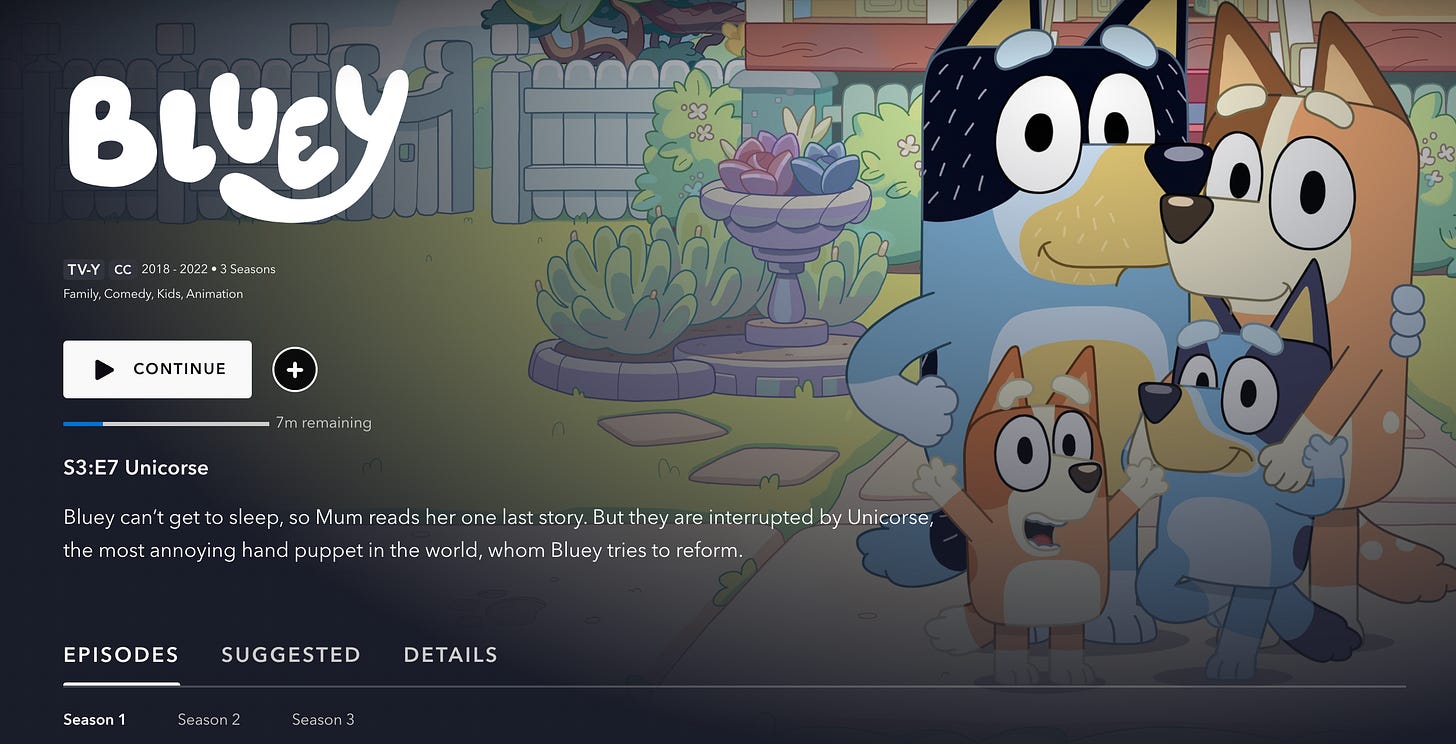According to internet trends, every generation has a blue cartoon dog. Boomers and Generation X had “Huckleberry Hound,” a southern coonhound with a boater hat, while Millennials and Gen Z had “Blues’ Clues.” These blue dogs and their humans guide children through stories and songs, helping raise them through the magic of television animation.
This remains true for Generation Alpha, who has “Bluey.”
The show focuses on Bluey, an Australian blue heeler, her sister Bingo, and their parents, Chilli and Bandit. Throughout the three seasons, Bluey and Bingo create their worlds using the props in their playroom and backyard.
They tell immersive stories of a rug island with no adults and a library with strict rules against noisy cousins. The show aired in 2018 and was ranked Australia’s number-one children’s show, leading to its release in the UK and United States. The animated dog had become an international superstar that needs no recommendation.
After watching the three seasons, it is clear to me that at least some of its popularity stems from the lessons it imparts to viewers. Unlike other children’s shows I’ve consumed (cough* cough* Peppa Pig), the children on the show learn essential lessons about behavior, acceptance, and emotions in a way that touches the heart. This is especially true for Bandit and Chilli, the parents on the show. They truly redefined how parenting on television is shown, with their interactions with Bluey, Bingo, and their friends being tender but also educational.
Through gentle parenting, the couple helps their children develop self-kindness and healthy coping mechanisms. They are highly supportive of their imaginative growth while also instilling lessons during play.
One episode exemplifies this: Season One, episode fourteen, “Takeaway.” Bandit takes Bluey and Bingo to pick up food at a local take-out restaurant. While waiting for extra additions to their meal, the children get into trouble, spilling the takeaway everywhere, throwing menus into the street, and even letting the tap water flood the sidewalk.
Although initially frustrated with his kids, Bandit reminds himself that they are young and that it is crucial to enjoy your youth. He joins Bluey in splashing in the flooded walkway and takes a break from the rush of adulthood. He understands what it is like to be a child and doesn’t punish them for acting their age. It’s inspiring to viewers to see a parent-child relationship like this, making “Bluey” such a fantastic show.
One shocking thing about “Bluey” is its popularity amongst 20-something-year-olds on TikTok. Many find the show inspirational and reminiscent since it teaches many lessons about confidence, inclusivity, and kindness while providing a comforting family some may lack in real life.
One episode that has gained traction is Season One, episode eleven, “Bike.” This episode follows Bluey, Bingo, and their cousin Muffin through a series of challenges that test their perseverance. It reminds viewers that if you keep trying, you can accomplish anything, regardless of size or ability. These lessons are not always evident in more “adult” shows, which is one reason “Bluey” is so attractive to older viewers struggling with their place in the world.
Furthermore, although much of the show is light-hearted, it also deals with some intense topics geared towards its older fans. One example is an episode in season three that deals with Chilli’s sister, Brandy. In the episode “Onesies,” fans learn that Brandy has had infertility and has avoided the Heeler family because of these struggles.
Although she was just a cartoon dog, many women empathized with Brandy. The family built a comforting space for viewers by including emotional content like this. Seeing these conflicts play out in a safe environment like the Heeler house may be helpful for those in these situations in real life. These moments, where you feel like these characters are helping you through a hard time, make this show so memorable to so many.
It may just be a children’s show, but to some, it provides a comforting family that many older fans have been looking for their whole lives. It is a show that needs no recommendation or review since it stands so powerfully on its own. Like many blue cartoon dogs before them, the Heelers teach children and adults to resolve conflicts, cope with strong emotions, and build a loving family.





